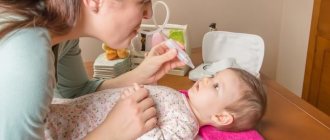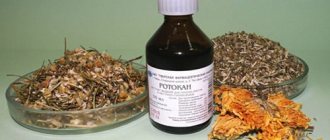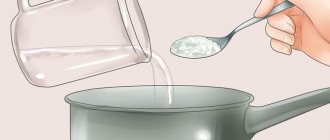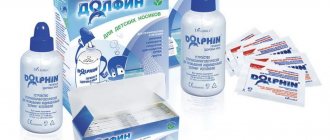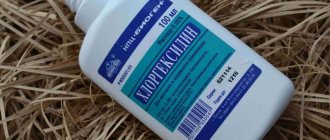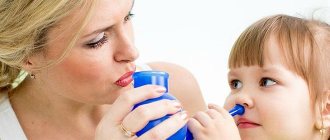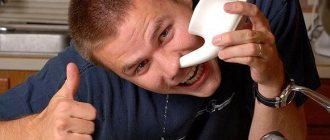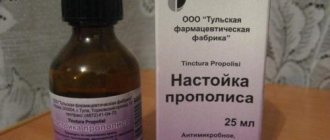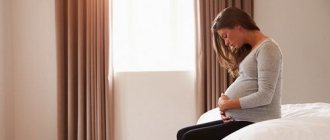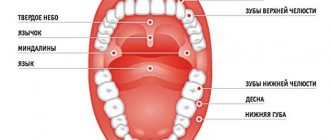How can you rinse your baby's nose?
The pharmaceutical market offers many ready-made solutions that can be used to rinse the nose of a newborn. These seawater-based solutions are relatively safe and help clear the cavity and remove congestion:
- Humer. Spray based on sterile sea water. Available in several forms for adults and children.
- Aquamaris.
- Dolphin. A whole system thanks to which you can easily rinse the nose of an infant.
- Salin. A bottle of sea water that delivers a stream in the form of an aerosol or drops. It is better for an infant to drip this solution, since a stream of aerosol can damage the baby’s delicate mucous membrane.
Washing can be done with ordinary saline solution, which is sold in every pharmacy and is relatively inexpensive.
If parents for some reason do not want to use pharmaceutical sprays, then what else can you use to rinse your baby’s nose:
- Washing with saline solution. Ordinary isotonic saline solution can be purchased at any pharmacy. Such rinses will help not only moisturize the mucous membrane, but also wash away dust particles, mucus and allergens from the child’s nasal mucosa.
- Decoctions of medicinal herbs (chamomile, calendula, etc.). To do this, pour a teaspoon of chamomile flowers with a glass of boiling water and let it brew for half an hour. Strain the prepared solution and carefully drop it into the child’s nostrils using a pipette. Such rinses clean and disinfect the inflamed mucous membrane.
- Salt rinses. Regular table salt or sea salt is suitable for this purpose. To prepare the solution, you need to dissolve half a teaspoon of salt in a glass of warm boiled water. This solution washes and moisturizes the mucous membrane, making it better resistant to infections.
When to rinse a baby's nose
Nasal rinsing is a set of hygienic and therapeutic procedures for therapeutic or prophylactic purposes.
Before organizing a baby's nasal rinsing, it is important to make sure that this activity is advisable. The main prerequisite for the need for the procedure is the appearance of pronounced nasal congestion in an infant, and it does not matter how it manifests itself (heavy breathing, mucus flowing from the nostrils, etc.).
Such phenomena negatively affect not only the baby’s comfort, but also his health, so it is very important to promptly identify the need for rinsing and carry it out.
After rinsing the baby's nose, it is necessary to determine what caused the congestion and eliminate the factor influencing the excessive formation of mucus. The main reasons for the increase in the amount of secretion are:
- colds
- allergic reaction
- environmental conditions that are uncomfortable for the baby (low temperature, increased dryness or humidity, etc.)
- tooth growth
Only by taking effective measures to eliminate the cause of nasal congestion in a child can we hope that no problems with his health will arise and repeated rinsing will not be required. It is necessary to eliminate the problem based on the cause of its occurrence, or more precisely:
- In case of allergies or physiological runny nose, it is worth additionally moisturizing the baby’s mucous membrane with medications
- in case of a cold, it is important to completely cure the child
- You just need to wait out the growth of teeth
However, it is worth understanding that when getting rid of any of the problems that cause nasal congestion in a child, you cannot refuse rinsing. They must be carried out until the runny nose completely subsides, because it is thanks to systematic rinsing that the baby will feel comfortable and not be capricious.
Preparation and procedure for rinsing the spout
Rinsing the nose will help the baby get rid of mucus, relieve swelling and free breathing.
Having established the need to rinse the baby’s nose, you will have to begin the procedure, even if you have not had to do this before. Using the recommendations below, every young mother should be able to cope with a not so difficult event.
So, first of all, you need to do some preparation. It consists of the following:
- Prepare or purchase, if you do not have it, the things necessary for washing. These include: a bulb or syringe, a rinse, hypoallergenic wipes and cotton swabs.
- Prepare a rinsing solution. As a rule, for this it is necessary either to turn to traditional methods of production (which is not always appropriate), or to prepare a solution from a product purchased at the pharmacy, following the instructions. The most primitive means for washing is a saline solution, which is prepared by mixing a full glass of warm and boiled water with two teaspoons of sea salt.
- Having carried out the two previous preparatory measures, it is necessary to draw the mixed solution into a bulb or syringe. After which you can begin the procedure itself.
Rinsing the baby's nose is carried out according to the following algorithm:
- Lift the baby vertically, holding him above the pelvis. Make sure his mouth is slightly open. This is important because the liquid will flow down the nasopharynx to the tongue. Otherwise, the baby may choke severely.
- Gently begin to inject the rinse solution into one of the nostrils. The first pressure on the bulb or syringe should not be too strong. You can increase the force when pressing only when the baby gets used to the incoming stream.
- Carefully ensuring that the child does not tilt his head back, finish injecting the solution into one nostril. Wait until all the liquid has drained from your mouth. After this, rinse, but through the other nostril.
To cleanse the nasal passages after rinsing, use either a bulb or small cotton swabs lubricated with oil, which it is important to insert no more than 2 cm into each nostril.
Useful video - how to properly rinse children’s noses:
What should you do if your child has nasal congestion to quickly cure it?
The above method is applicable for those children who can already hold their head independently or with the help of others. If the baby cannot yet remain in an upright position for a long time, rinsing the nose should be done as follows:
- Place the baby on his back and begin instilling the rinsing solution in very small doses using a pipette.
- After rinsing both nostrils, clean the nasal passages in accordance with point 4 from the previous algorithm.
To effectively rinse a baby’s nose, it is enough to do everything clearly, competently and slowly, using the information presented above. Also, do not forget that before washing, it is important to remove all excess secretions using a bulb or napkin.
Washing technique
When it comes to rinsing, many parents are afraid to rinse their child's nose due to the fact that babies' nasal passages are narrow and easy to injure. How to rinse a baby's nose:
- The baby lies on his back, and the adult carefully removes dry crusts from the nose with a cotton swab dipped in Vaseline or other oil.
- Using a pipette, carefully pour 4-5 drops of saline solution into one nostril. You can use saline solution or chamomile decoction.
- Wait until the liquid flows into the nasopharynx and the baby swallows it.
- Repeat the procedure for the second nostril.
- Remove residual fluid from the nostrils with cotton wool.
Important! It is forbidden to rinse the nose of a child of any age if there is purulent discharge in his nose. In these cases, when washing, the infection can enter the middle ear cavity and cause otitis media.
There are special suction aspirators that make it possible to clear the nose of mucus and snot
How to rinse the nose of a child six months and older. At this age, the child can already sit, so he is washed in a sitting position using bulbs with a soft rubber tip or special suction:
- A small amount of rinsing solution is placed into the child's nose.
- After this, the suction tip is carefully inserted into the nostril and the solution with mucus and discharge is sucked out.
- Repeat the procedure for the second nostril.
- At the end of the procedure, dry the mucous membrane with cotton wool or ask the baby to blow his nose if he can.
Important! The well-known rinsing, when a solution is poured into a nostril and it pours out of the other nostril, is almost impossible to perform on an infant, so it is better to use soft suctions and other devices.
Procedure for washing a baby's nose
If you have decided on the advisability of this procedure and have purchased the necessary product and special devices, then you can begin to clean your baby’s nose. You will need:
- Bulb aspirator - at the pharmacy you can buy special children's aspirators, which can look like elephants with a special tip;
- Syringe – can be sold complete with an aspirator;
- A special rinse agent - this can be a saline solution known as sodium chloride, a medical preparation, or a solution based on sea salt.
If you prepare a rinsing solution yourself, it’s easy to do - take 1 liter of boiled warm water and dissolve 1 teaspoon of sea salt in it. You can consult a specialist about the most suitable option.
Let's start washing the newborn's nose:
- Pre-clean your baby's sinuses using an aspirator; you can also do this with cotton wool soaked in a rinsing solution. Then the solution will fit better into the spout.
- Lay the newborn on his side, and gradually pour in the solution from a syringe or aspirator until it begins to flow out of the nose on its own. Along with the solution, unnecessary mucus will come out of the nose.
The most favorable time for the procedure is after bathing the baby, since his nose is as clean as possible and rinsing will be easy.
Such rinses can also be done with other solutions, for example, you can use a decoction of chamomile, which is known for its antibacterial properties. Sage infusion and other herbs and remedies are also used.
During the procedure, it is recommended to gradually pour the solution into the child’s nose so that he does not get scared and choke. If the child swallows the solution, there is no need to panic, just turn the baby over on his tummy and lightly slap him on the back.
How to clean and rinse aspirators
There are a large number of special nozzles that can be used in children. They are vacuum, mechanical, manual and electric.
The simplest aspirator is a rubber bulb with a soft tip. It comes in different diameters. How to use it for washing:
How to properly rinse your nose with saline solution
- Place the solution in your nose.
- Squeeze the pear as much as possible.
- Insert the tip into the nostril.
- Slowly release, sucking out all the mucus and snot.
Mechanical aspirators are sold in every pharmacy. They are tubes with filters and attachments. The principle of their operation: the parent inserts the tip into the child’s nose, having first poured rinsing liquid into it and pulls it out with his mouth.
There are electric and vacuum aspirators that have greater power. They cost several times more than manual and mechanical devices, and are rarely used at home.
Cleaning products
How to rinse your nose? Some specific medications are usually not prescribed, since many of them have a negative effect on the child’s body. Pediatricians recommend rinsing the nose with chamomile and sage as medications if there is no allergy, but most often they use saline solutions of various concentrations, which you can buy or make yourself at home. A table with concentrations and therapeutic effect is provided below.
| Nasal rinse solution | Salt concentration | Effect |
| Isotonic | 0,9% | Improves airway patency, relieves tissue swelling, makes mucus more liquid, which increases its outflow. Does not kill microorganisms |
| Hypotonic | Less than 0.65% | Dilutes secreted mucus and improves its outflow from the nasal cavity. Also suitable for moisturizing mucous membranes |
| Hypertensive | 1% or more | The most effective remedy, has a negative effect on pathogenic microorganisms, eliminates swelling, “pulls out” even purulent discharge |
In medical practice, a hypotonic solution is practically not used, since it gives a weaker therapeutic effect than the other two concentrations.
It is on the basis of the described solutions that pharmacological companies produce all kinds of medicines.
With isotonic concentration:
- Aquamaris.
- Humer.
- Otrivin Baby.
- Regular saline solution.
With hypertonic concentration:
- Aquamaris Strong.
- Quicks.
- Marimer Forte.
- Humer.
With hypotonic concentration:
- Salin.
- But-salt.
What else you need to remember when washing
In a child up to 1-2 months old, mucus may constantly accumulate in the nose. This is the so-called physiologically runny nose of a newborn, caused by the narrowness of the nasal passages. Don't get too carried away with washing and treating it. In such situations, it is enough to clean it of mucus 1-2 times a day with a regular gauze strip soaked in oil.
If your baby regularly collects crusts and mucus in his nose, but there are no other symptoms of the disease, then you should pay attention to his living conditions. Children's mucous membranes are very sensitive to dry air and temperature changes. You need to control the air and humidity in the nursery and then you won’t have to suffer with constant washing.
The course of washing is 7-10 days. If necessary, they can be used much longer, since they are relatively harmless and non-addictive.
Washing is not carried out in the presence of purulent-infectious processes in the nose and in small patients with ear diseases. If parents doubt the correctness of their actions, it is better to consult a doctor in advance so as not to suffer from complications of the disease later.
How to rinse a child's nose?:
Before starting a course of rinsing, you should consult your pediatrician. In some cases, rinsing is useless, for example, if the child’s difficulty breathing is caused by a skewed nasal septum.
For children after four years of age, nasal rinsing can be conveniently done using a syringe:
• The syringe is filled with the prepared solution; • The baby bends his torso forward. We ask the child to take a deep breath and then hold his breath. • Apply the nozzle of the syringe to the entrance to the nasal cavity. Gently press the rubber bulb. The solution will begin to pour out of the opposite nostril. • When the liquid stops pouring out, remove the tip of the syringe from the nasal passage, and only after that open the syringe itself. • We ask the baby to blow his nose. At the same time, the baby should open his mouth slightly. • Repeat the rinsing procedure with the other nostril.
If the child cannot blow his nose on his own, you need to clear the nose of secretions and residual solution in the nasal passages using an empty syringe. The small patient must take a deep breath and hold his breath. The parent applies the spout of an empty syringe with air released to the nostril, while closing the opposite nostril. Then you should open the syringe and suck out the mucus.
When carrying out the procedure, you need to take into account some features:
• Blowing your nose should only be done with your mouth open! This way you reduce the pressure on your eardrums. • Rinsing the nose is not carried out before bed; it is better to postpone this procedure for another time. • After the procedure, do not go for a walk for at least half an hour. • You need to squeeze the solution out of the syringe smoothly, and in no case with sudden movements.
